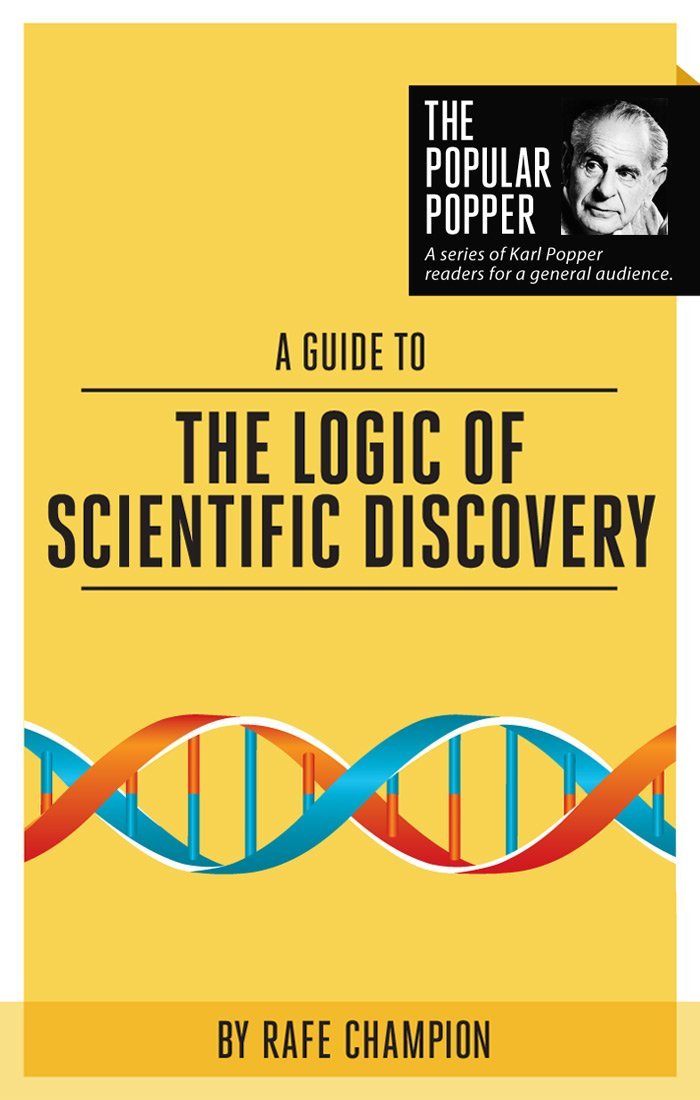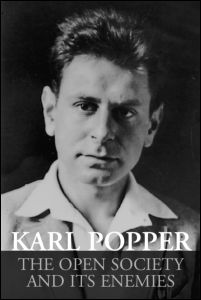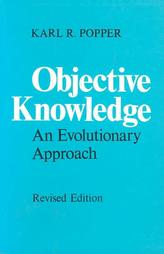Here are some new thoughts and arguments concerning the problem of induction. More than once, I’ve come across the argument that Goodman’s “new” problem of induction can be solved by appealing to degrees of falsifiability. Recently, I came across the strongest argument I have yet encountered for that position, such that my ordinary responses were inadequate to address it. It has forced me to delve deeper into positions which I’ve held but rarely even attempted to articulate.
I begin with a quick recap of the problem of induction, Goodman’s problem of induction, and reflection upon both. I then proceed to discuss falsifiability and the argument purported to address Goodman’s problem. Finally, I briefly discuss the nature of sensory experience before finally presenting my counterargument. I don’t really have much of a conclusion–perhaps I’ll leave something in the comments or write another post.
Recap of the Problem of Induction
The problem of induction arises out of empiricism. In this view, all synthetic knowledge is based on sensory experience. That is, synthetic knowledge ought to be derivable from, or reducible to, the past or present contents of the senses. Synthetic beliefs that aren’t derived from, or justified by, such experience have no legitimate claim to knowledge. Furthermore, synthetic beliefs that cannot, in principle, be derived from sensory experience are variously derided as unscientific, speculative, or meaningless.
The problem of induction emerges when considering our expectations and predictions about the future, especially the universal character of scientific hypotheses. In short, how is it possible to know anything about a future which nobody has experienced? How do we know the sun will rise tomorrow when we have only experienced sunrises in the past? A classic illustration of the problem concerns the sentence ‘every raven is black’. However many black ravens we find, it never follows, logically, that no ravens are white. Therefore, the sentence ‘every raven is black’ is unjustifiable, in principle, by sensory experience–by some accounts, it would be sheer speculation or nonsense. The same problem can then be generalised to all our expectations and predictions about the future, including our most celebrated scientific hypotheses.
Traditionally, attempts to solve this problem involve proposing another type of logic, induction–a mode of inference that projects from particular sensory experiences to general expectations or hypotheses, replete with predictions about the future. Sensory experience, then, remains the arbiter of synthetic knowledge, but now, augmented with induction, its reach can be extended to justify expectations and predictions about the future, especially scientific hypotheses.
But what justifies this use of induction? Attempts were made to establish a ‘principle of induction’ (e.g. the future resembles the past), by entirely analytic means, but they proved unsuccessful. The only means of justifying the use of induction seemed to be an appeal to sensory experience itself: if the future has always resembled the past before, then surely it’s reasonable to expect the future to continue resembling the past. However, such arguments must appeal to induction to establish their conclusion and in doing so merely begged the question at hand.
Goodman’s Problem of Induction and Why It’s Important
Traditional accounts of induction are concerned with justifying its use or how to properly evaluate the cogency of inductive arguments. It’s normally taken for granted that induction–as a mode of inference from past experience to general expectations and hypotheses–is possible or even straightforward. For example, from our past experience with green emeralds we may, it’s presumed, unambiguously induce that all emeralds are green. Nelson Goodman, however, challenged this assumption.
Goodman introduced a new predicate: grue. Something is grue if it’s green before a some arbitrary time in the future, and if it’s blue thereafter. Goodman noted that our past experience with green emeralds would then equally support both that every emerald is green and that every emerald is grue. We may, from the same past experience, induce either conclusion, though each contradicts the other. In principle, there are infinitely many grue-like predicates that, while in agreement about our past experience, each imply something different about the future. The only constraint on what can be induced about emeralds–whether about their colour, shape, size, or whatever–is that our conclusion not contradict past experience, a limit that’s imposed by deductive criteria alone.
The most common reaction to Goodman’s problem is to insist on parsimony. That is, just as sensory experience must be augmented with induction, so too must induction be augmented with a principle of parsimony if we are to justify expectations and predictions about the future. The disjunctive character of grueness, so it’s claimed, is artificial–a mere derivative of the predicates green and blue. Therefore, the most parsimonious induction from past experience of green emeralds is, quite simply, that every emerald is green.
However, this response will not do. The apparent complexity of grueness is an artifact of the English language: a bias in favour of green and blue. For example, let Inglish be the same as English except that grue and bleen are primitive rather than green and blue. In Inglish, then, something is green if it’s grue before some arbitrary time in the future, and if it’s bleen thereafter. An Inglish speaker, then, might be tempted to claim that green is the artificial predicate–a mere derivative of grue and bleen. The most parsimonious induction from past experience of green emeralds, for an Inglish speaker, would seem to be that every emerald is grue.
While parsimony may be an important desideratum of inductive arguments, it must–however we choose to define it–transcend the implicit suppositions of any particular language. Indeed, not only are there are infinitely many grue-like predicates to confound attempts at induction, but there are also infinitely many Inglish-like languages that each sponsor a different conclusion as the simplest. Furthermore, by augmenting induction with a principle of parsimony, similar questions arise as when augmenting sensory perception with induction. Before, we were confronted with the question, ‘what justifies our use of induction?’, and now we can add the question, ‘what justifies our appeal to parsimony?’.
Reflections by a Critical Rationalist
From a critical rationalist perspective, the traditional problem of induction isn’t a problem at all, because we’re non-justificationists. In our view, justification is both impossible to attain and, in any case, unnecessary for rational assent. There is no need to justify–analytically or synthetically–any principle of induction. Instead, such a principle may be conjectured talis qualis, and it may be held rationally until found wanting through critical analysis and discussion. There would, however, be little point in doing so. When rejecting the demand to justify knowledge, the problem that induction was intended to solve no longer prevails. That is, there’s no longer any impetus to justify–by sensory experience or anything else–our expectations and hypotheses about the future. There is, in this case, no need for induction at all.
While the traditional problem of induction loses its force in the context of critical rationalism, Goodman’s problem of induction doesn’t. Rather than challenging people to justify their use of induction, Goodman undermines the presumption that induction is of much use in the first place. If there are infinitely many grue-like predicates for any supposed induction, then induction is too weak–for any given set of premises–to establish a unique conclusion (or even a finite list of conclusions). The question of what to expect from the future is utterly undecidable by inductive means. People who claim to be using induction would, in this view, simply be mistaken, not unlike the shaman who claims to use ‘dream visions’ to speak to his ancestors.
Can Falsifiability Rescue Induction From Goodman’s Problem?
All else being equal, falsifiable hypotheses are preferable to non-falsifiable competitors, and more falsifiable hypotheses are preferable to less falsifiable competitors. Why? Because more falsifiable hypotheses have greater empirical content. If correct, they’re more informative about what can and cannot happen given different circumstances. Moreover, if mistaken, they’re easier to expose to crucial experiments and discard quickly. Supposing that ‘our whole problem is to make the mistakes as fast as possible’, like the physicist John Wheeler said, then the falsifiability of competing hypotheses becomes an important criterion of rational criticism and preference.
Degrees of falsifiability are also associated with parsimony. Popper draws such a comparison in The Logic of Scientific Discovery, even going so far as to declare: ‘The epistemological questions which arise in connection with our concept of simplicity can all be answered if we equate this concept with degree of falsifiability‘. But Popper seems to be overplaying his hand here. While there are parallels between falsifiability and parsimony, it appears to fall short of an identity. In particular, we should like to compare entirely metaphysical hypotheses for parsimony independent of any prospect of falsification.
Whatever the precise relationship between falsifiability and parsimony, it has been suggested as a possible solution to Goodman’s problem. Specifically, augmented with the principle that we always prefer the more falsifiable hypothesis, induction would unambiguously conclude, from past experience with green emeralds, that every emerald is green rather than grue. The assumption here is that, ‘every emerald is green’ is more falsifiable than, ‘every emerald is grue’. But is that true? It would be ironic, to say the least, if a criterion championed by critical rationalists–perhaps the ultimate anti-inductivists–were able to save induction from Goodman’s problem.
At first blush, both theories appear equally falsifiable. The green and grue theories of emeralds are in total agreement until some arbitrary time in the future. Until that time, any falsification of one must also falsify the other; only afterward do their predictions diverge. So we must wait. Once we have waited long enough, every emerald we look at is going to be green, blue, or neither. If it’s blue, then the green theory of emeralds is falsified. If it’s green, then the grue theory of emeralds is falsified. And if it’s neither, then both theories are falsified. Therefore, every potential falsifier of the green theory is also a potential falsifier of the grue theory.
However, suppose we build a special contraption to photograph an emerald. The time of the photograph is random. But the photograph will only be printed after the predictions of our theories diverge. In this case, the green theory is falsified if the emerald in the photograph appears blue (or otherwise non-green), because our contraption should never have an opportunity to have photographed anything but a green emerald. However, the grue theory is falsified only if the emerald in the photograph appears neither green nor blue, because our contraption would have had the opportunity to photograph either.
It would appear, then, we have identified an experiment where the green theory has more potential falsifiers than the grue theory. The green theory, therefore, is more falsifiable after all. Maybe this fact can establish ‘every emerald is green’ as the proper conclusion when inducing from past experience with green emeralds.
So far as it goes, I concede the argument: the green theory of emeralds is more falsifiable than the grue theory of emeralds, and perhaps it may be preferred on that basis alone. However, I contend that such falsifiability is reckoned relative to background assumptions that, when inverted, can be repurposed to establish precisely the opposite: the grue theory of emeralds is more falsifiable. My argument, then, will be analogous to our previous use of Inglish to criticise the claim that grue is an intrinsically artificial or more complex predicate than green.
There are no absolute degrees of falsifiability, but rather degrees of falsifiability depend on flexible background assumptions. While this conclusion is innocuous in the context of critical rationalism, it’s damning to our attempt to rescue induction. Falsifiability alone, then, is impotent in the face of Goodman’s problem of induction.
The Limits of Sensory Experience
‘Thus the connection between the perceptions and the statements remains obscure, and was described by correspondingly obscure expressions which elucidated nothing, but slurred over the difficulties or, at best, adumbrated them through metaphors.’ – Popper
When we look upon a bright day from inside a dark room, it appears brighter than when we step outside. The explanation for this effect is well-known: when we step outside and are bathed in light, the iris contracts the pupil, restricting how much light reaches the retina. Our perception of brightness doesn’t pick out absolute light intensity, but calibrates to ambient illumination. Why? Because tracking real light intensity was less important to our ancestors’ survival than the relative light intensity of nearby objects. Our perceptions, then, may be untethered from what is, in reality, a stable property of the world.
We’re so accustomed to this phenomena that we ignore it more or less by instinct. However, suppose that we had no such instinct, no explanation, and we just noticed the phenomena for the first time. It would be a visual illusion. Perhaps we might even suppose that our stepping outside caused the light to drain away. In any case, sensory perception alone isn’t enough to resolve the matter either way, since it’s our very interpretation of those perceptions which is at issue.
What separates illusions from observations is that our prima facie interpretation of an illusion is problematic–perhaps it contradicts another assumption or we have some explanation which accounts for the perception. For example, the lines seem to be different lengths at one moment and the same length at another; or the static image seems to rotate as we scan our eyes over it; or the two colours seem different in one context but the same in another. We dismiss illusions as mere seemings, but they illustrate an important principle: propositions about reality cannot be derived from sensory experiences alone, because observation is theory-laden.
Seeing in Grue and Bleen
Suppose that a mad scientist, with your permission, implants a small device in your brain. This device is set to reconfigure your brain so that everything that would normally have appeared blue will instead appear green, and vice versa. (Alternatively, it could alter your memories so that everything which appeared green in the past will instead be remembered as blue.) The device will activate at precisely the same moment the grue theory of emeralds predicts that every emerald will become blue. In consequence, the perceptual quality you currently call ‘green’ will now pick out the property of grueness, while ‘blue’ will pick out bleenness. You will, in effect, begin seeing in grues and bleens.
Now we return to our hypothetical experiment. Once again, we have the special contraption rigged to photograph an emerald at some random time, and the photograph is only to be printed after the predictions of our theories diverge. But what will we see this time? The grue theory is falsified if the emerald appears bleen, because gruenees is now a perceptual constant. However, the green theory is falsified only if the emerald in the photograph appears neither grue nor bleen, because–just like for in Inglish–something is green if it’s grue before and if it’s bleen thereafter
Therefore, the greater falsifiability of the green theory of emeralds depended on implicit assumptions concerning how to correctly interpret experience. By explicitly contradicting those assumptions, we can turn the argument on its head and conclude that the grue theory of emeralds is more falsifiable.
So long as we’re aware that our measures of falsifiability are not absolute but relative to background knowledge, they aren’t problematic for that reason alone. Moreover, since I share the background knowledge which led to the original conclusion that the green theory is more falsifiable, I agree that it is, in fact, more falsifiable. However, the intractable role of this background knowledge means that degrees of falsifiability are unable to address Goodman’s problem of induction. Just as the apparent complexity of grue and bleen depended on whether we were speaking English or Inglish, so too does the apparent greater falsifiability of the green theory depend on whether we see in greens or grues.






